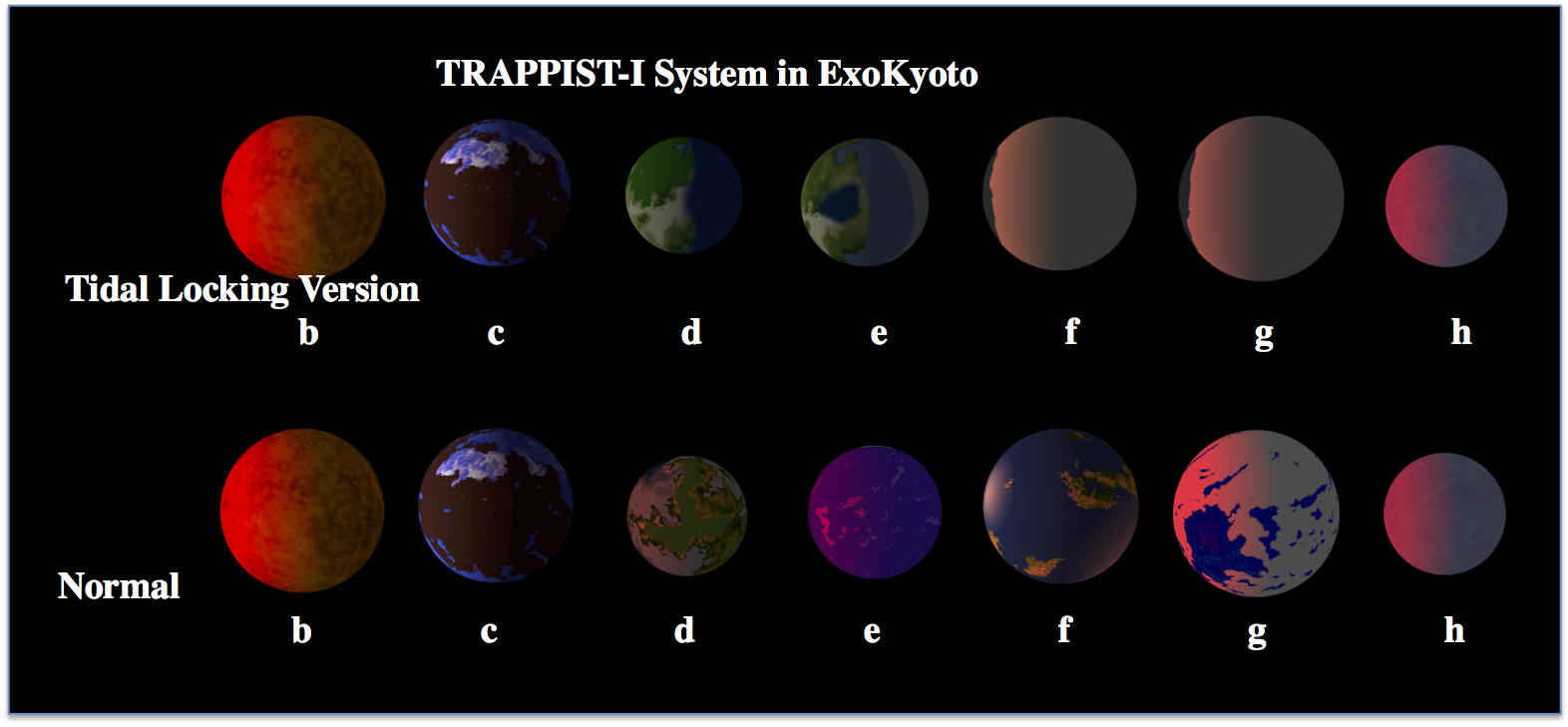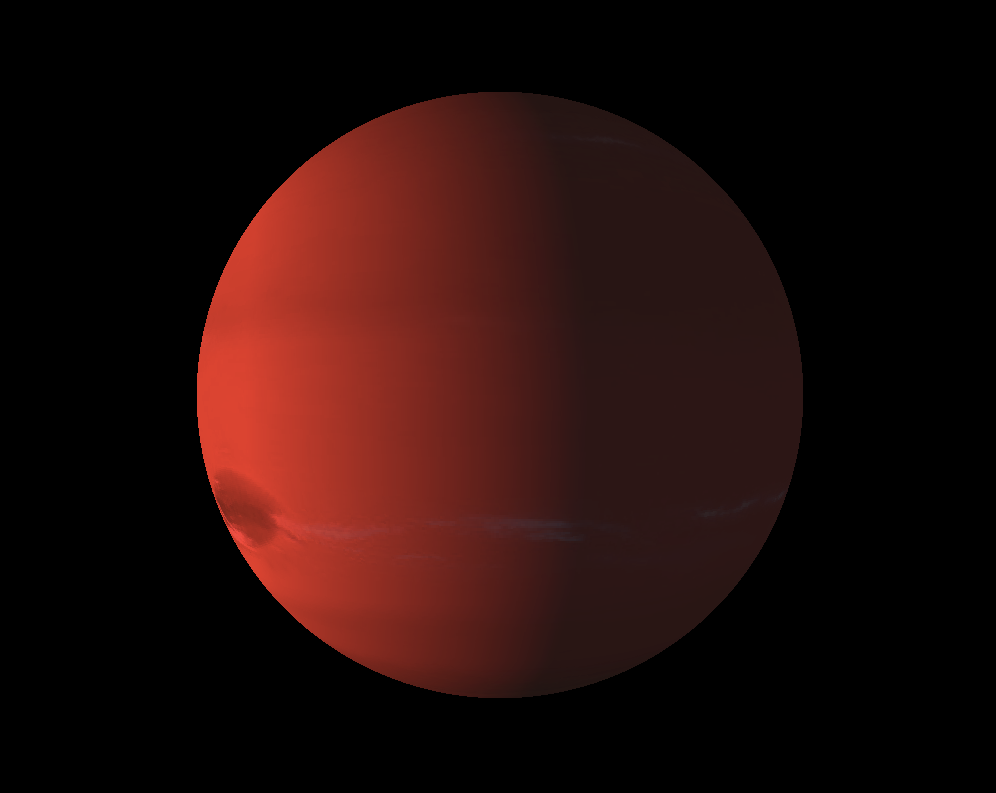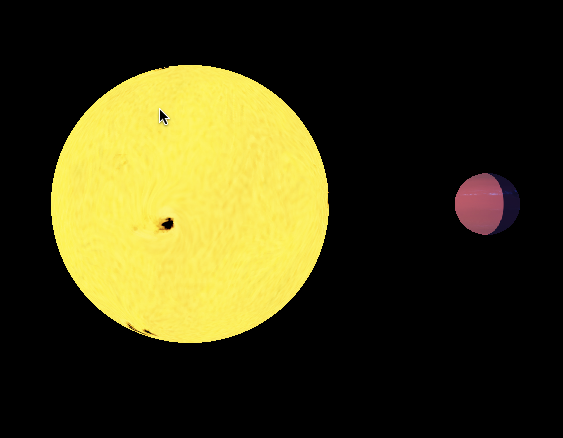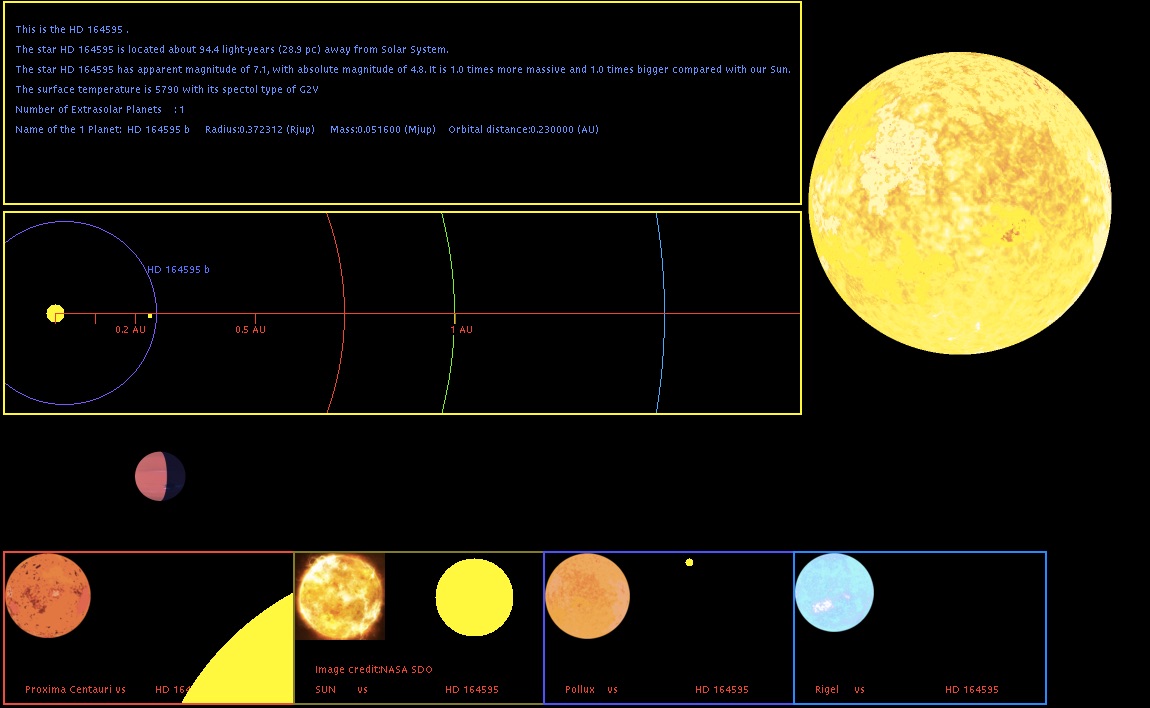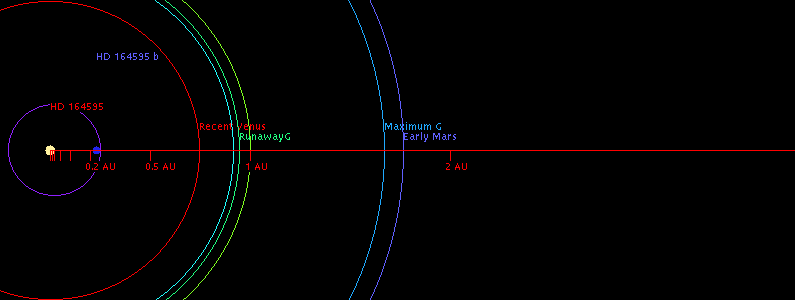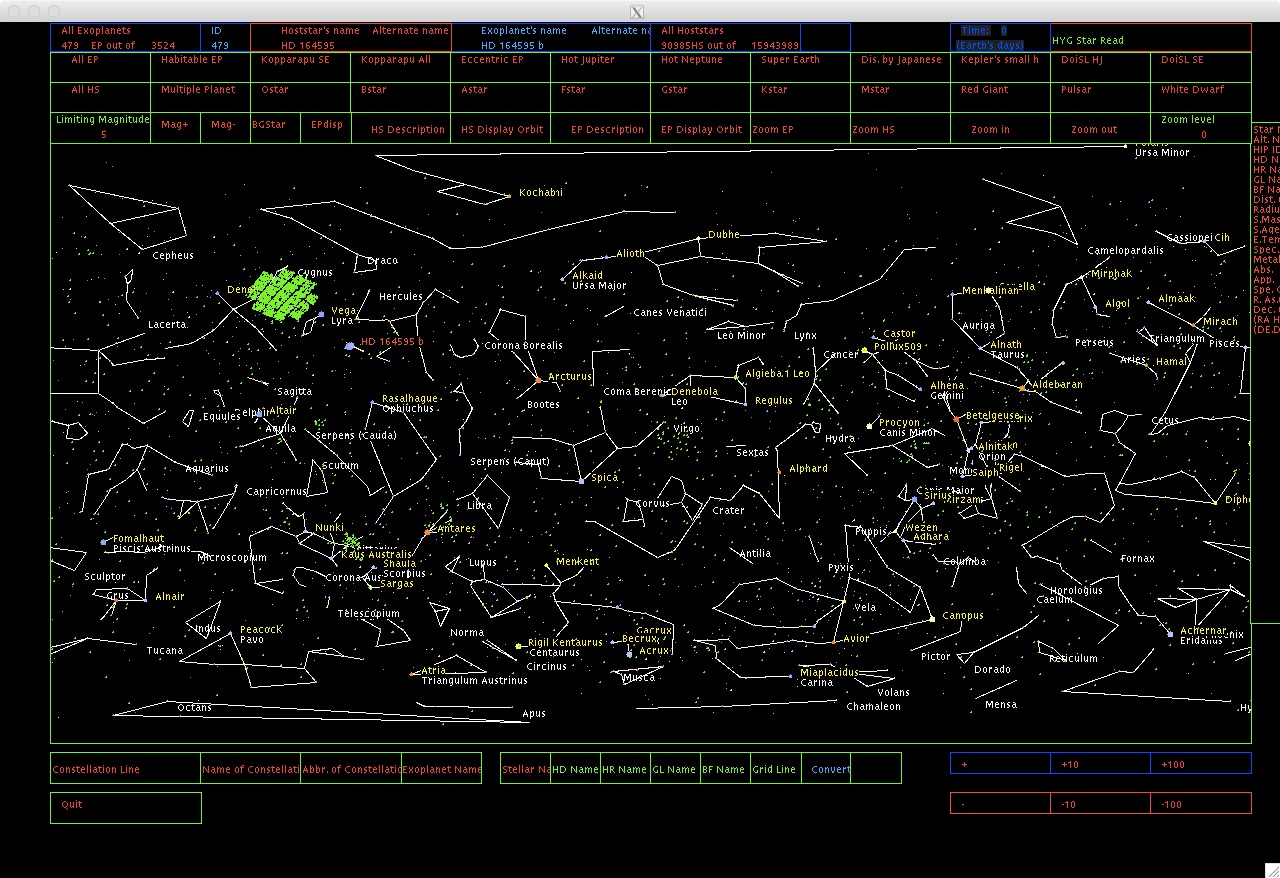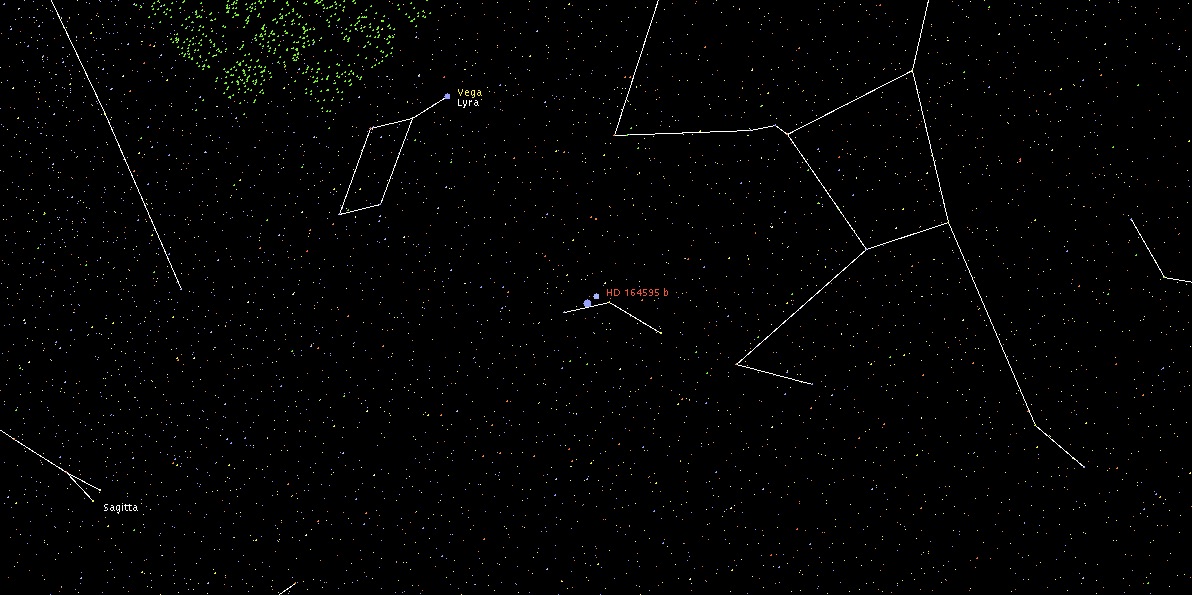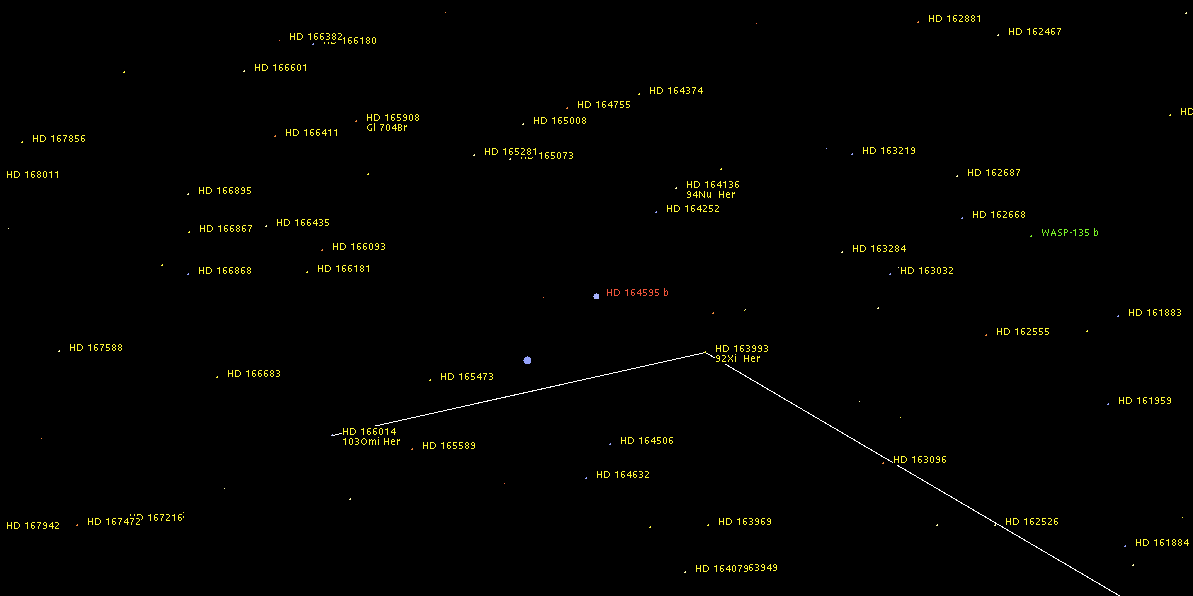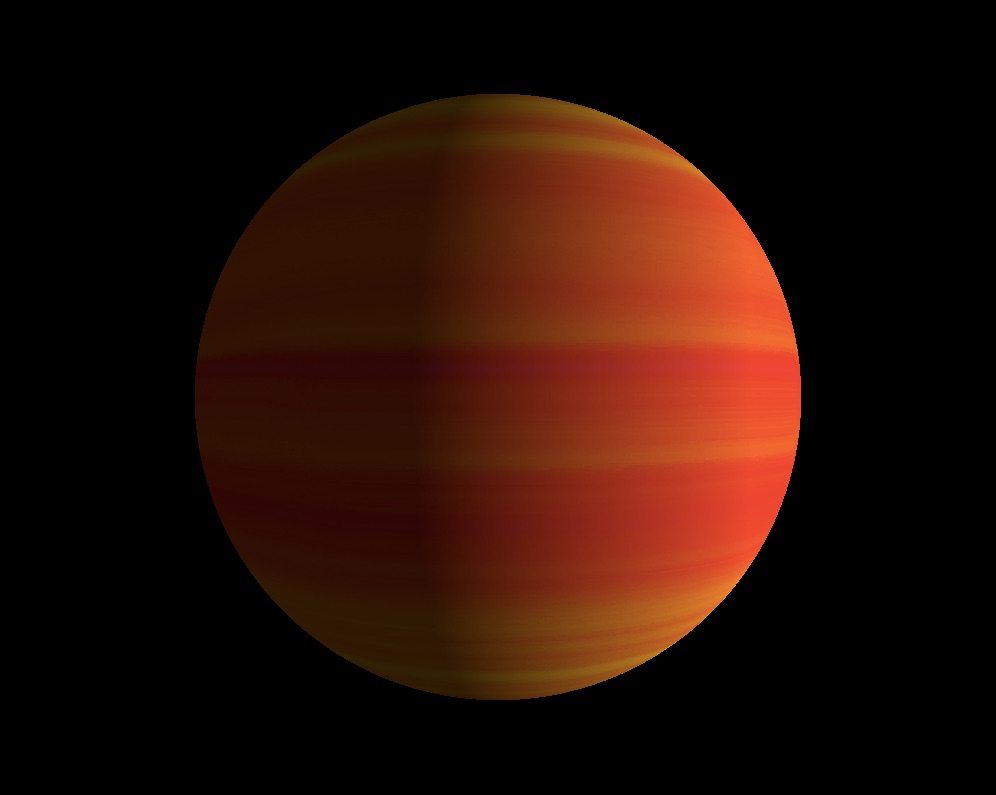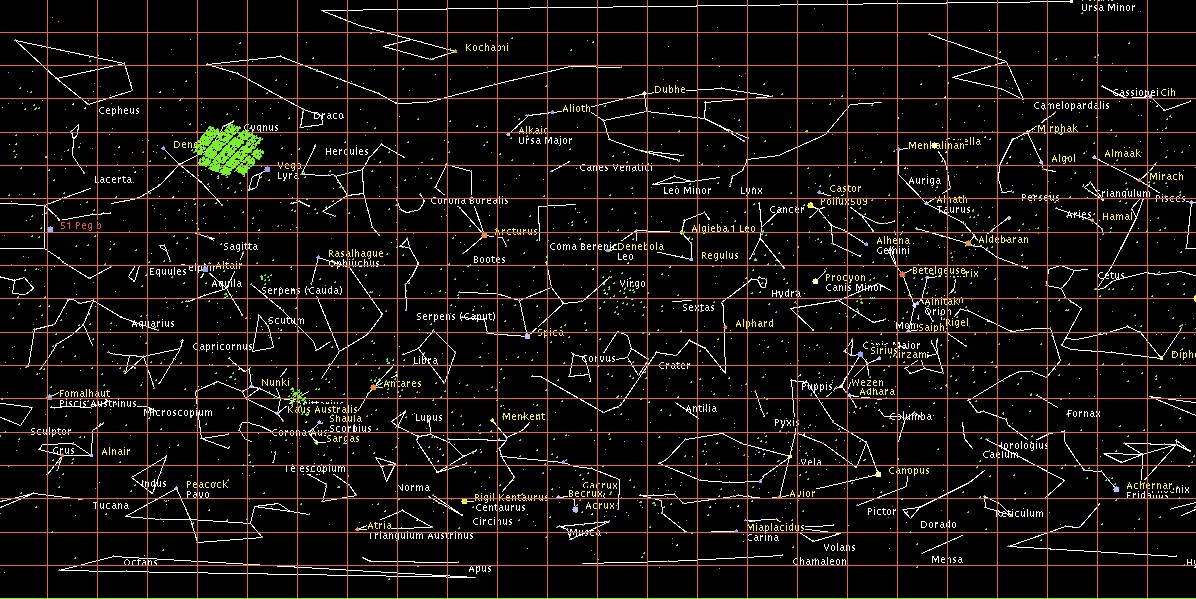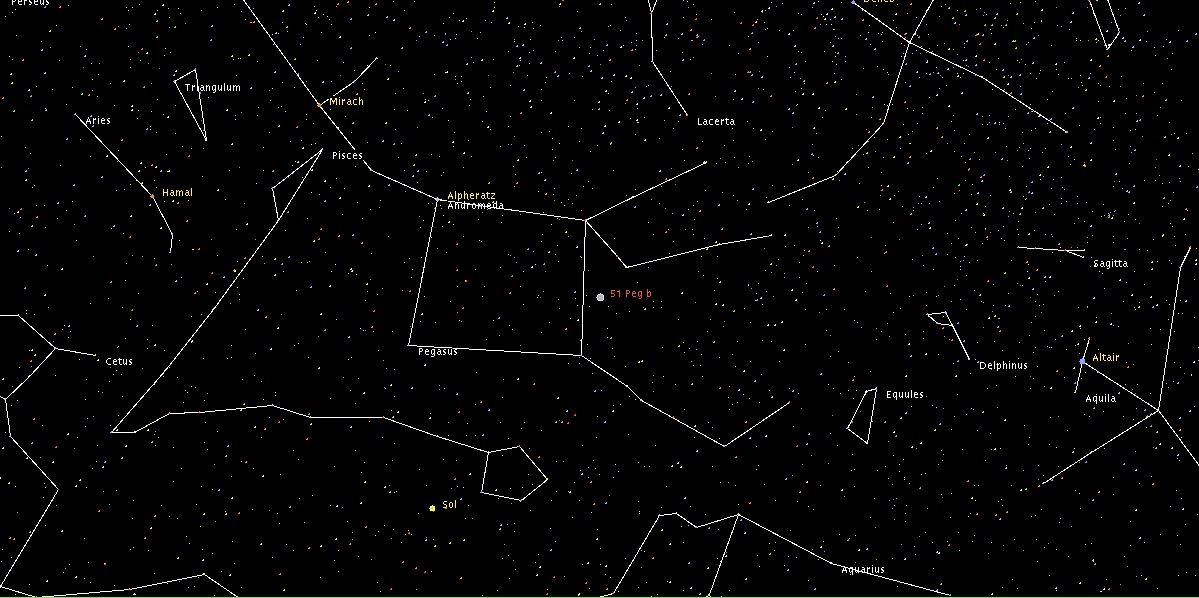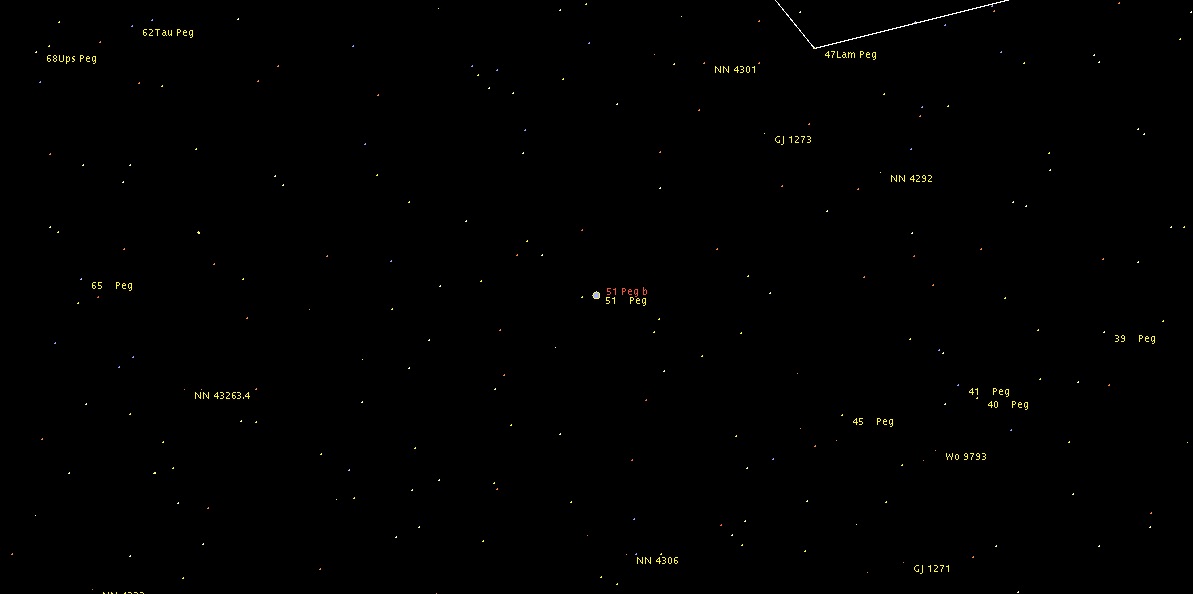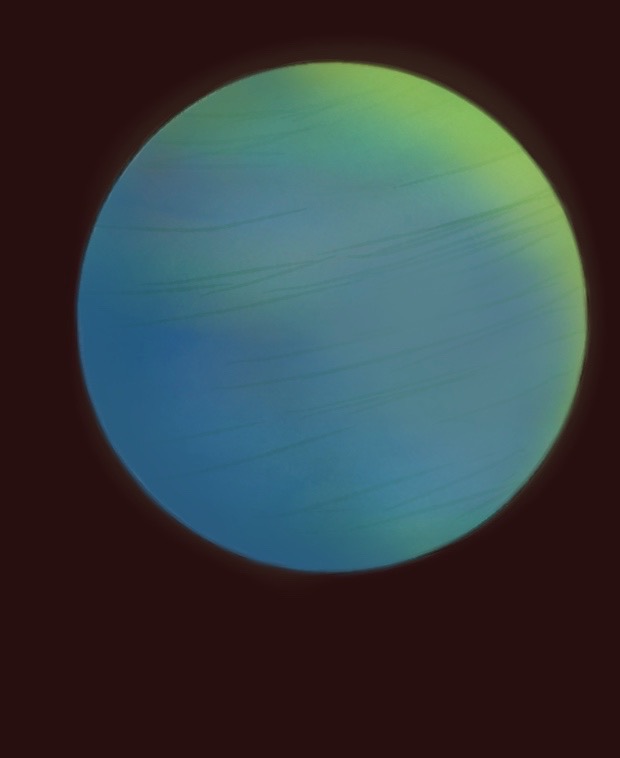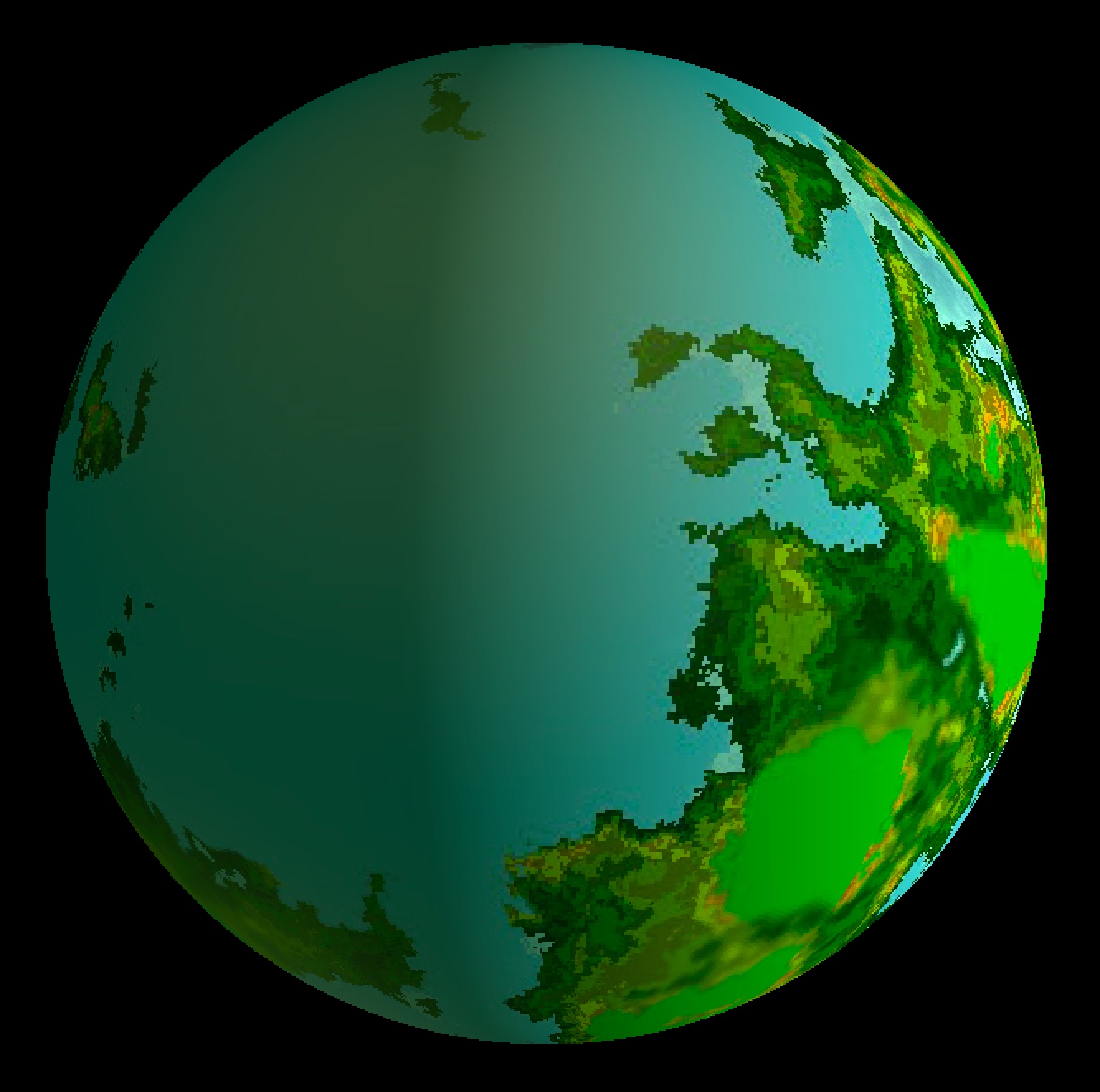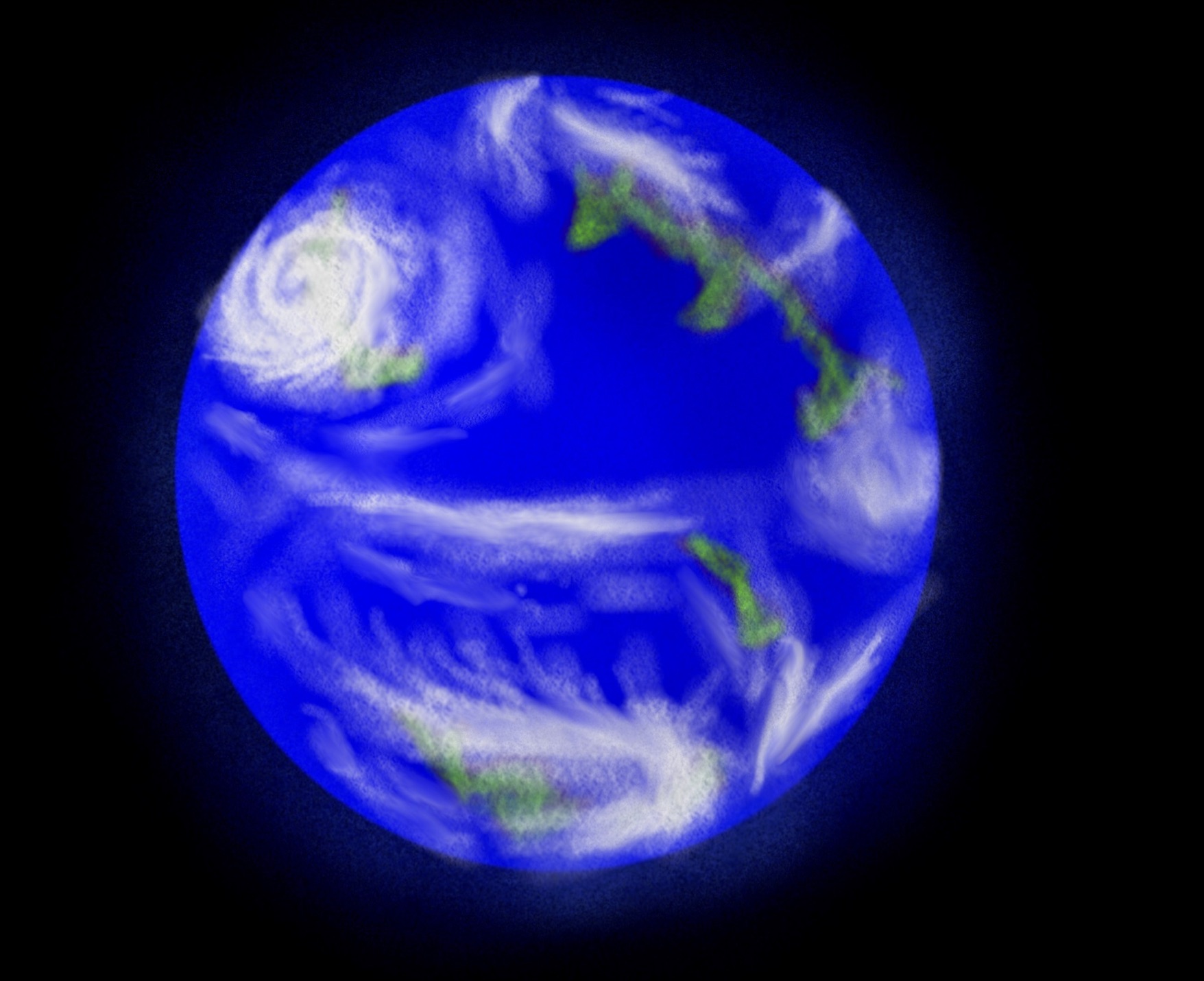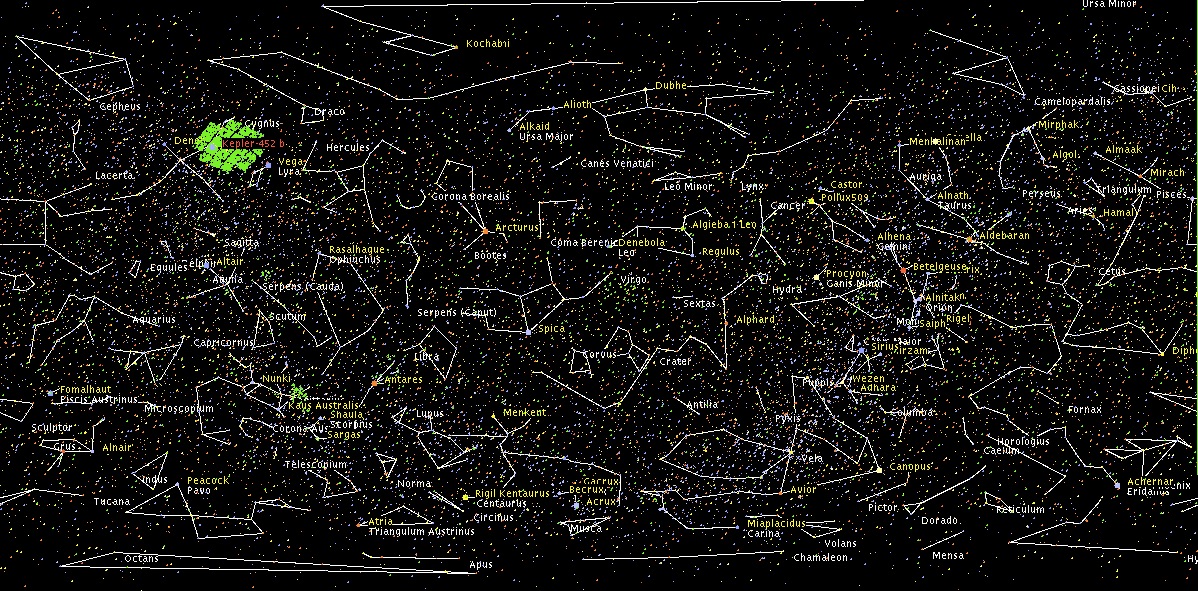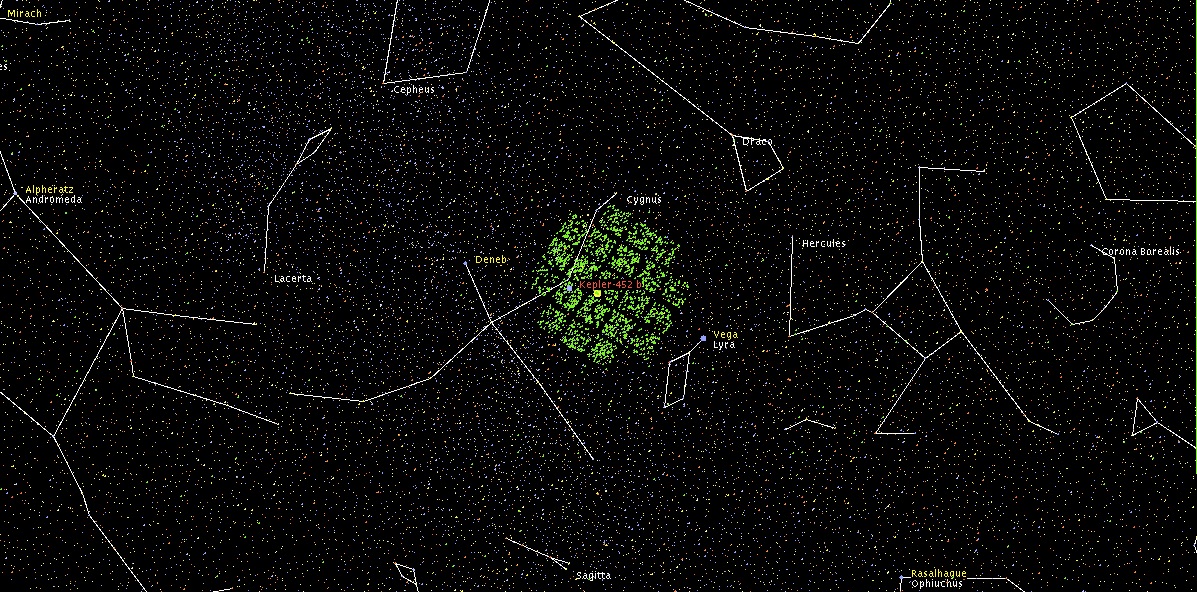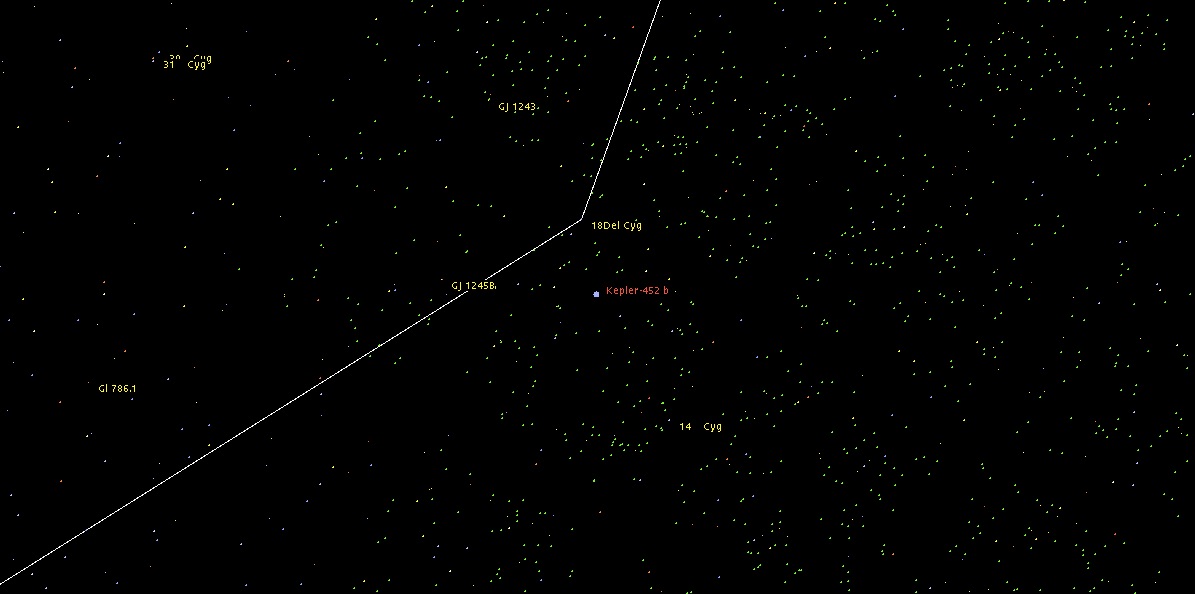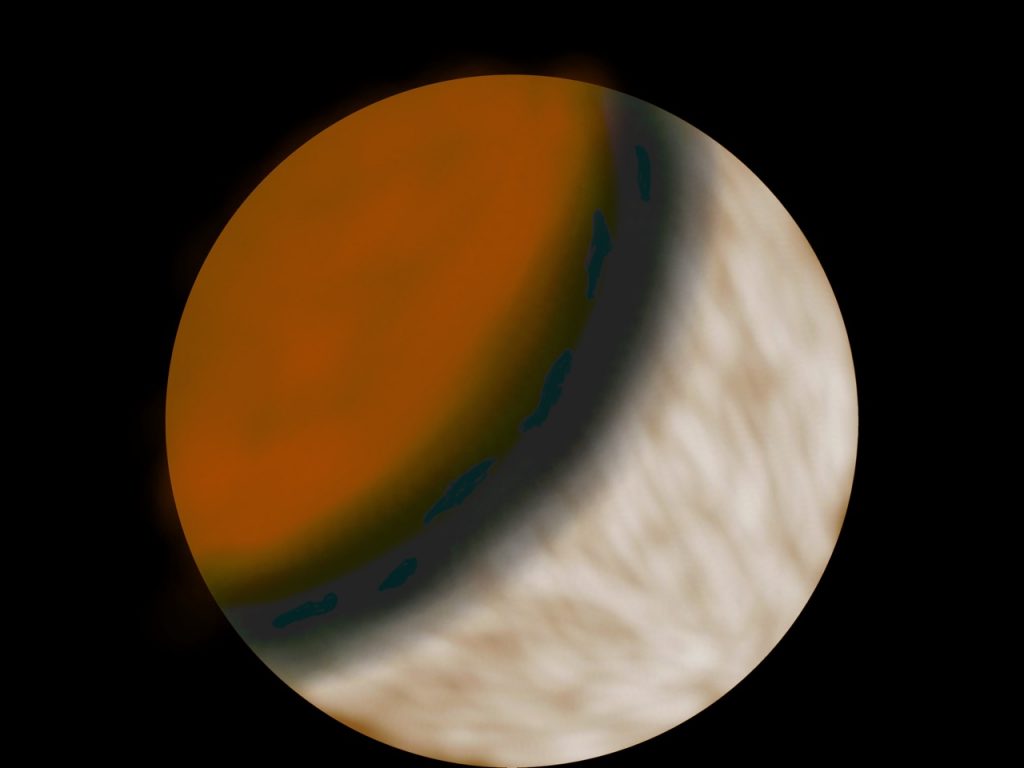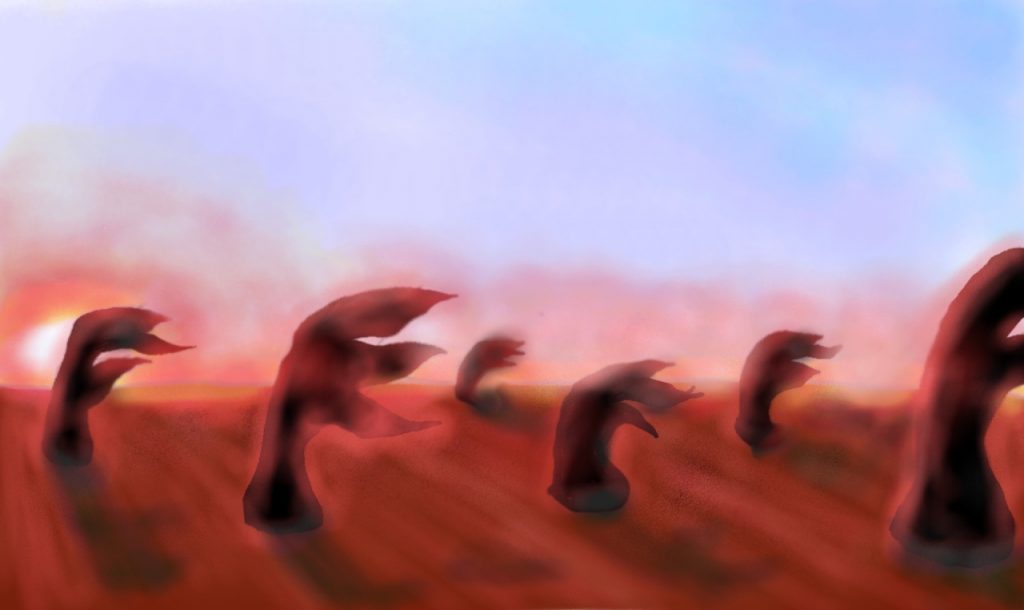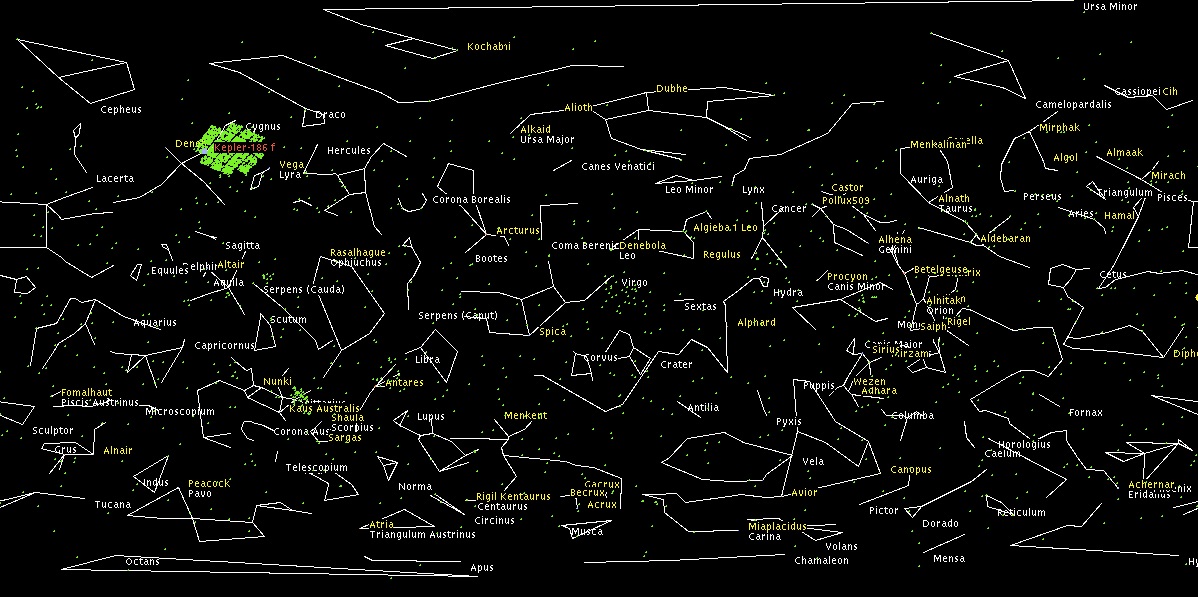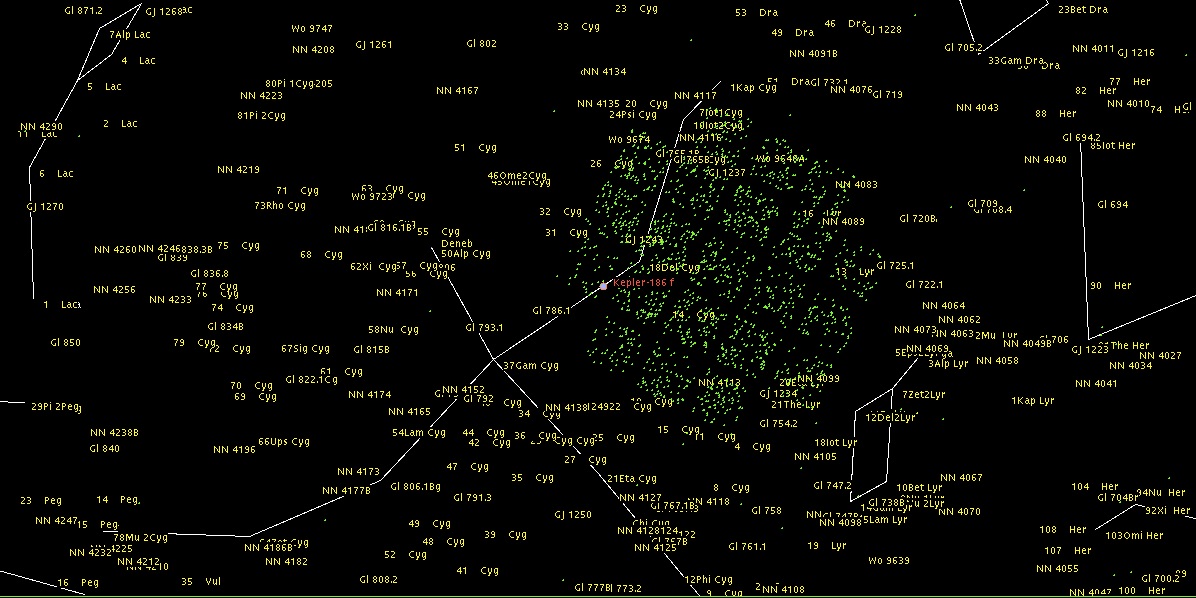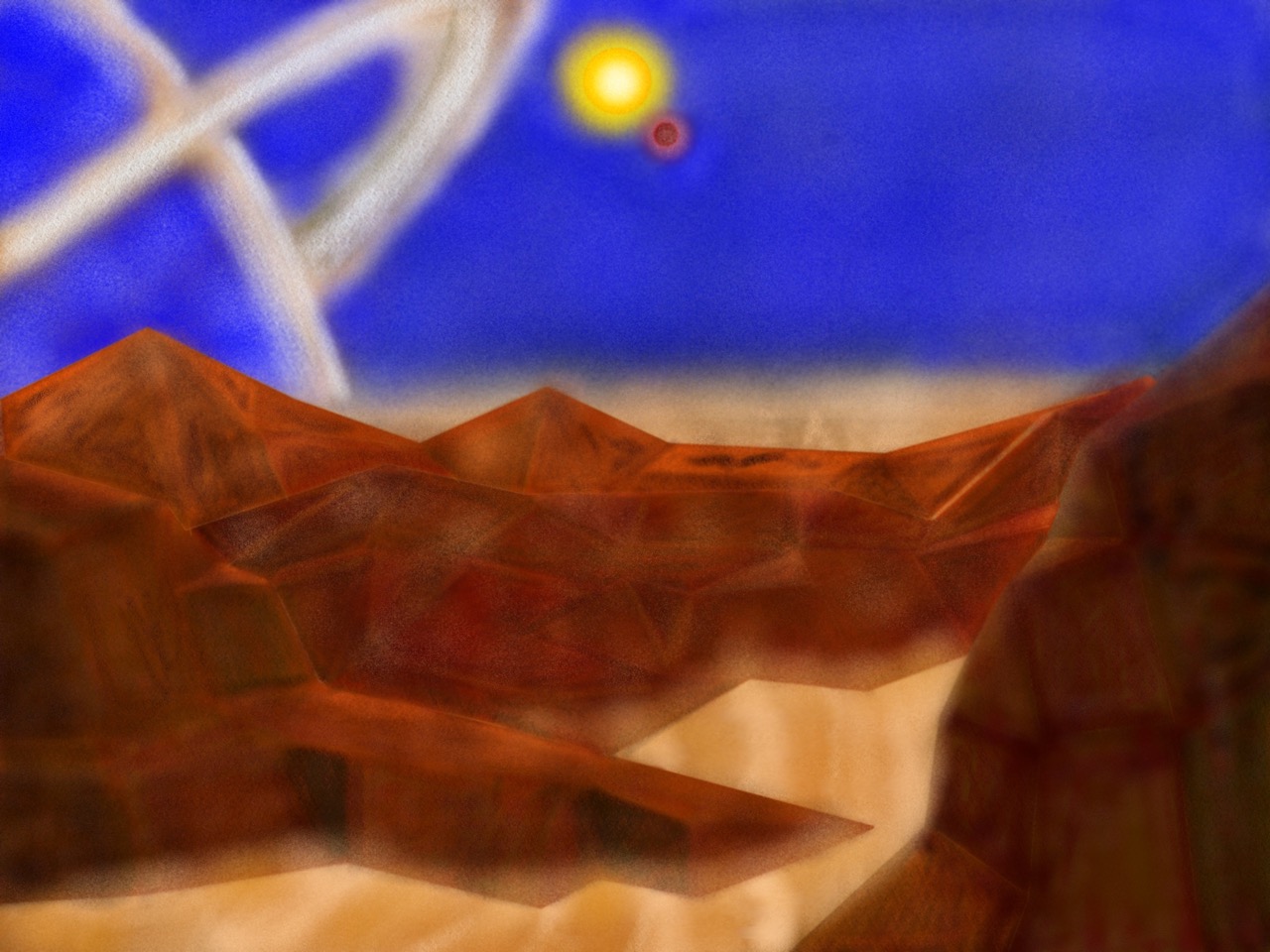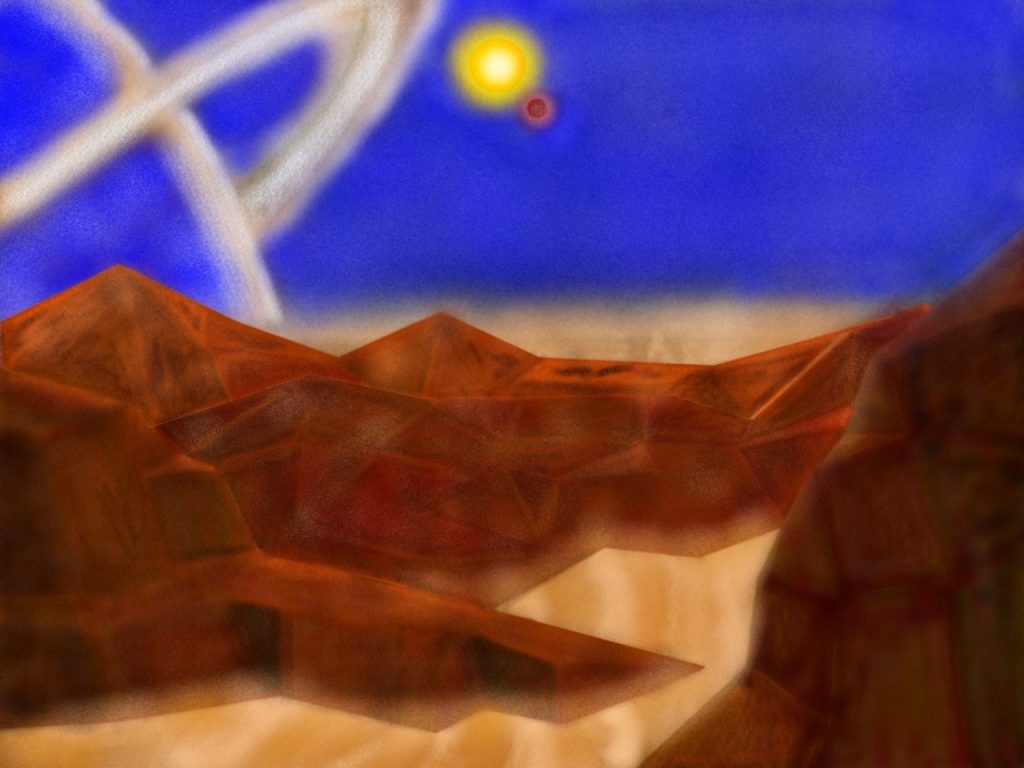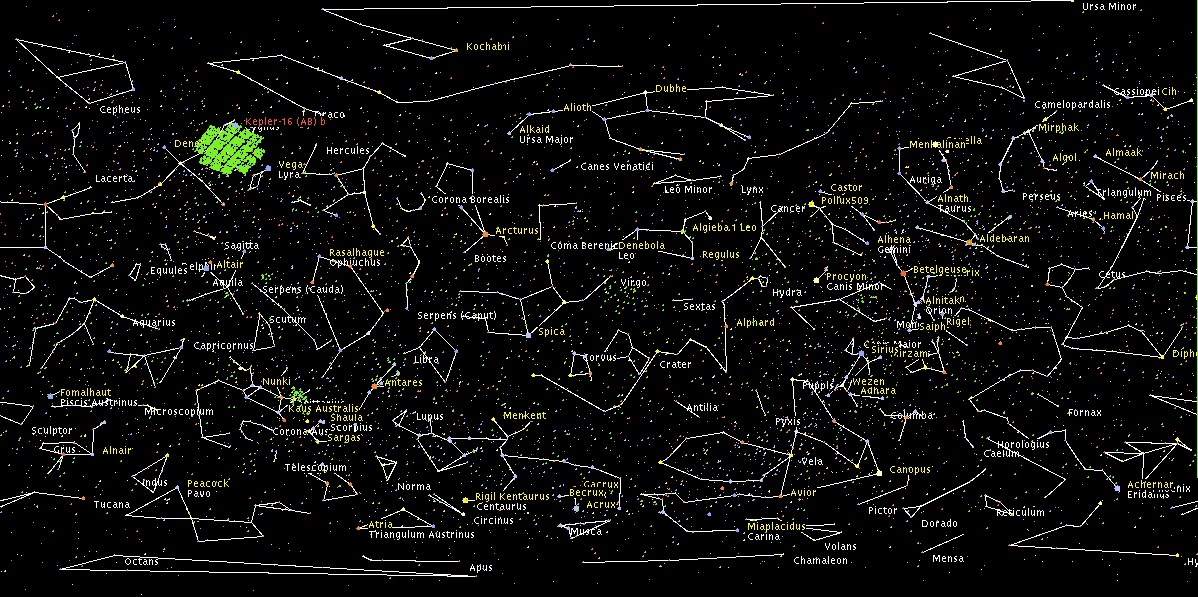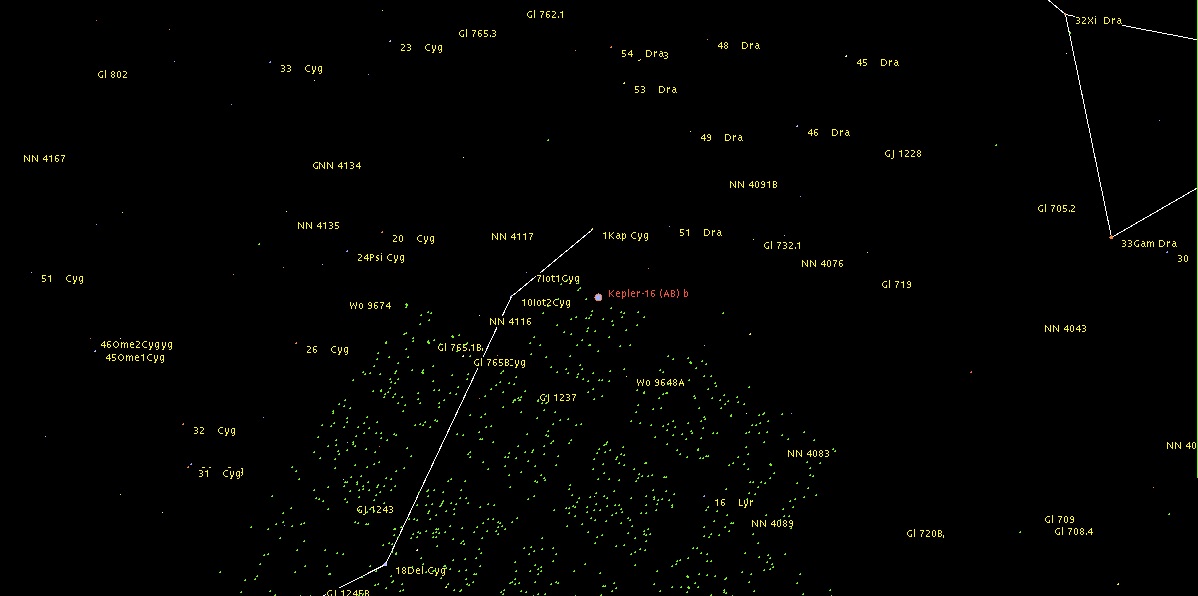TRAPPIST-1 b, c, d, e, f, g, h

(Imaginary TRAPPIST-1 System by Exoplanetkyoto Image Credit: Yosuke A. Yamashiki, Fuka Takagi, Ryusuke Kuroki, Natsuki Hosono)
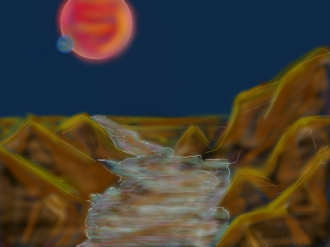
(Imaginary Picture of TRAPPIST-1 d, Credit Shione Fujita & SGH Moriyama High School)
TRAPPIST-1 は、みずがめ座に位置し、太陽系からおよそ39光年離れたところに存在する、M8型の赤色矮星で、表面温度2550K、半径はProxima Centauriより小さい0.117太陽半径、質量は0.08太陽質量です。木星の半径は0.1太陽半径、質量は0.001太陽質量なので、見かけ上木星よりわずかに大きく、質量は木星の80倍程度なので、いわゆる自分で光るギリギリの大きさの恒星(矮星)だと言えます。Ultra Cool Dwarf Star(超低温矮星)とも言われています。

(TRAPPIST-1の大きさの比較図 左はProxima Centauri星との比較、右は太陽との比較)
TRAPPISTとは、TRAnsiting Planets and PlanetesImals Small Telescopesの略で、ベルギー・リエージュ大学(http://www.ulg.ac.be/cms/c_5000/accueil)の天文地学海洋専攻(AGO)のプロジェクトでチリのESO La Silla 天文台 とモロッコのOukaïmden 天文台(2016.10.6開始)に設置された望遠鏡ネットワークであり、このTRAPPIST-1は2016年にLa Silla天文台で発見され、地球よりわずかに大きな惑星が3つ、このクラスの赤色矮星の周りに初めて発見されました1) 。さて、特にこのTRAPPIST-1系のハビタブルゾーンにあると言われた3番目の惑星TRAPPIST-1dのトランジット観測による周期と軌道が確定せず、ハビタブルゾーンの惑星発見のニュースはキャンセルされるかと心配されていました。ところがそれがさらなる大発見につながったのです。
2017年2月22日(日本時間2月23日午前3時)、NASAはTRAPPIST系に合計7つの惑星が発見されたと発表しました。また、そのうち3-4つはハビタブルゾーンにあると考えられています。
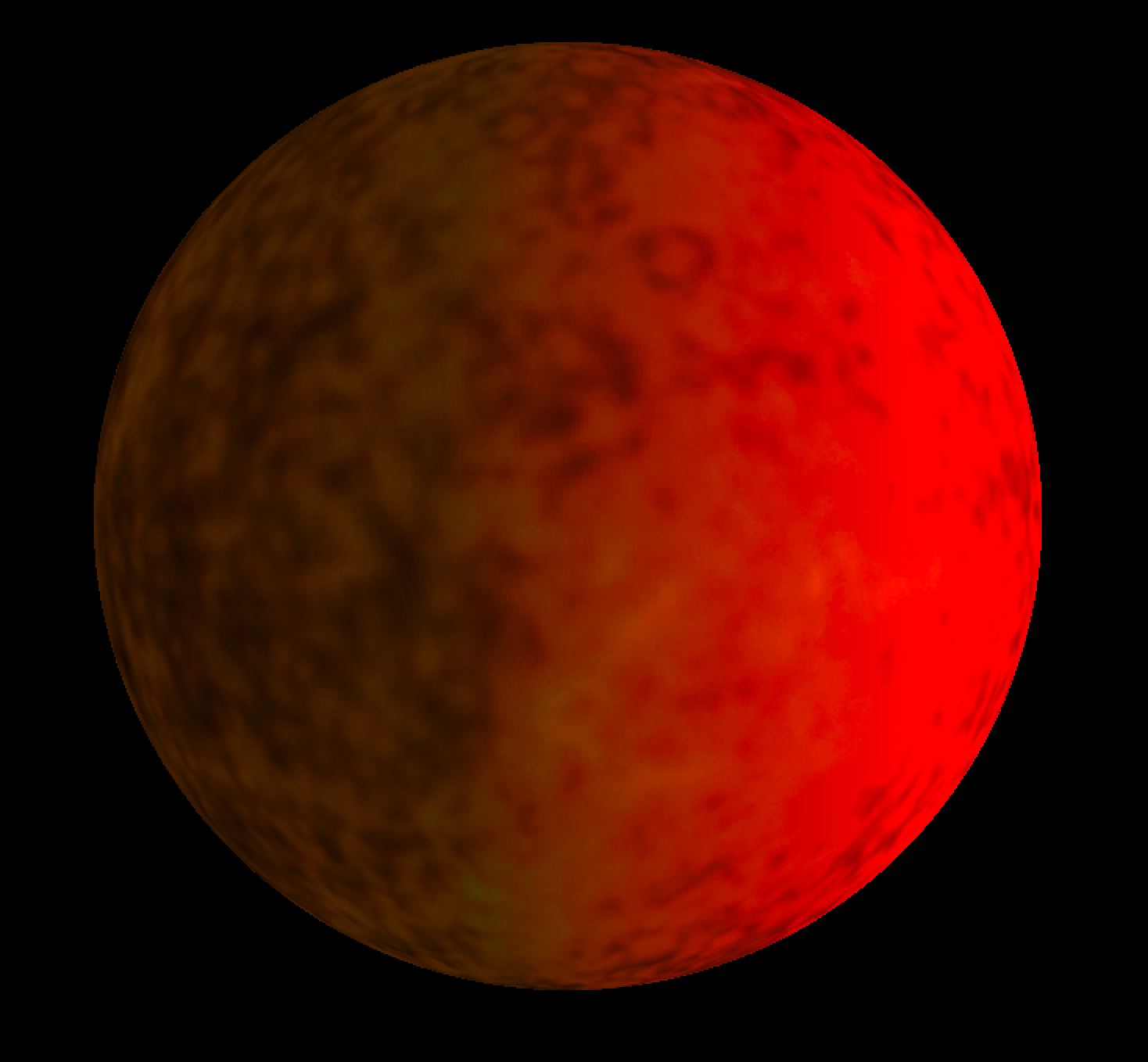
(Imaginary Picture of TRAPPIST-I b, credit, Yosuke Yamashiki, Ryusuke Kuroki & Natsuki Hosono)
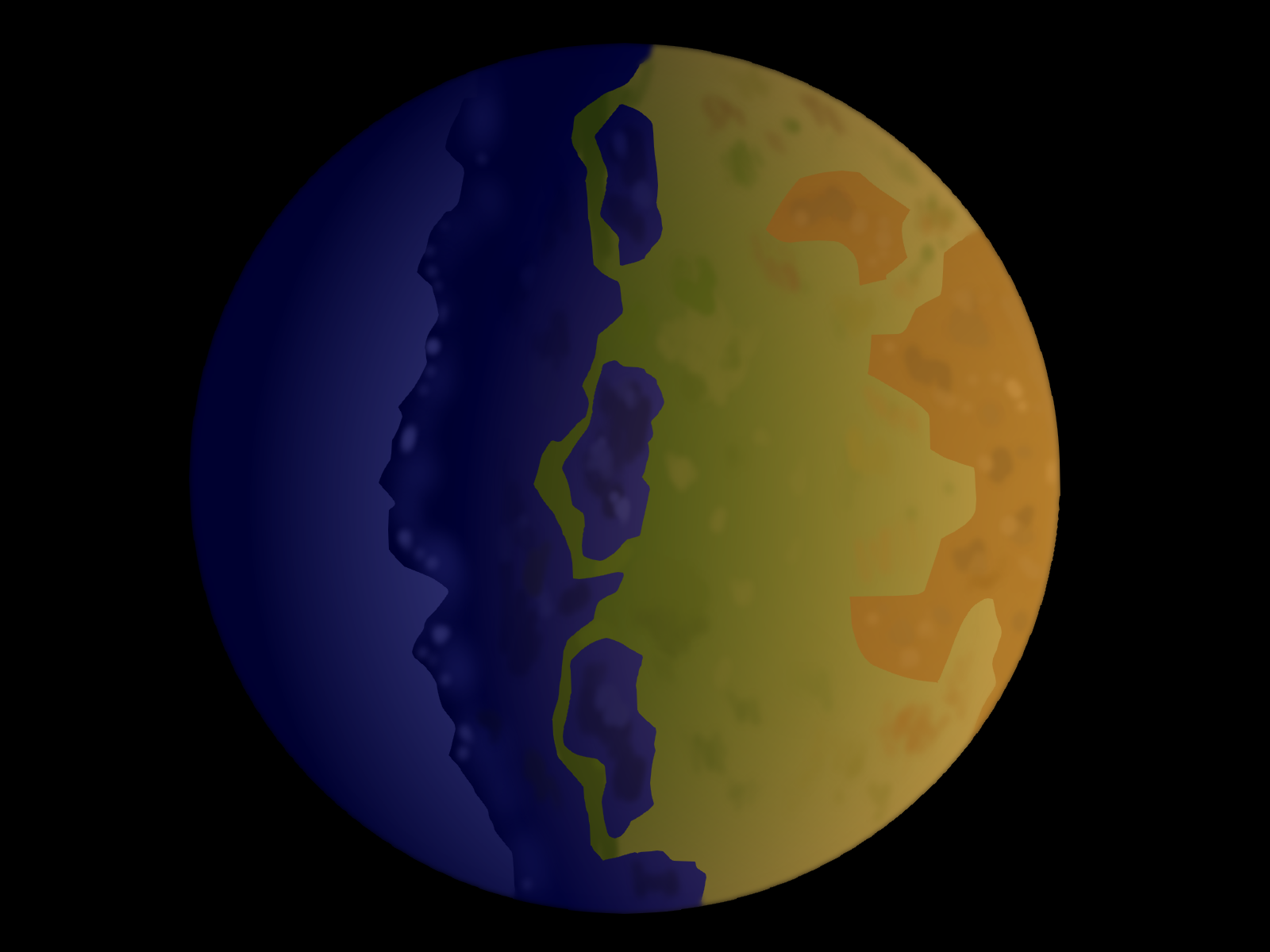
<潮汐ロックされたと仮定した場合のTRAPPIST-1 dの想像図 credit: Miu Shimizu, Habitable Research Group SGH Moriyama High School>
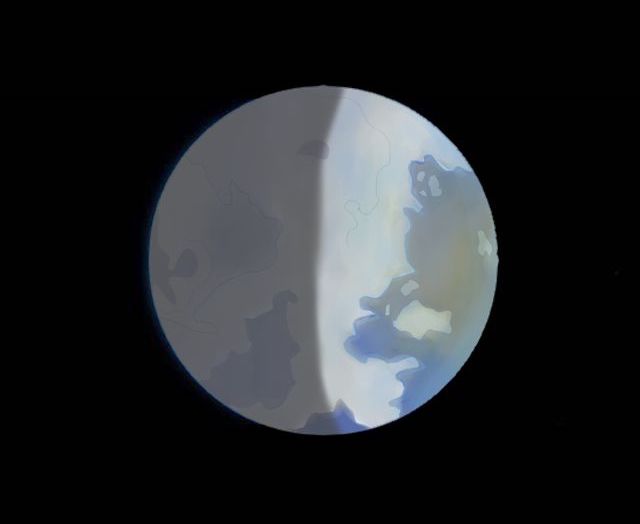
<潮汐ロックされたと仮定した場合のTRAPPIST-1 eの想像図 credit: Rina Maeda, Habitable Research Group SGH Moriyama High School>
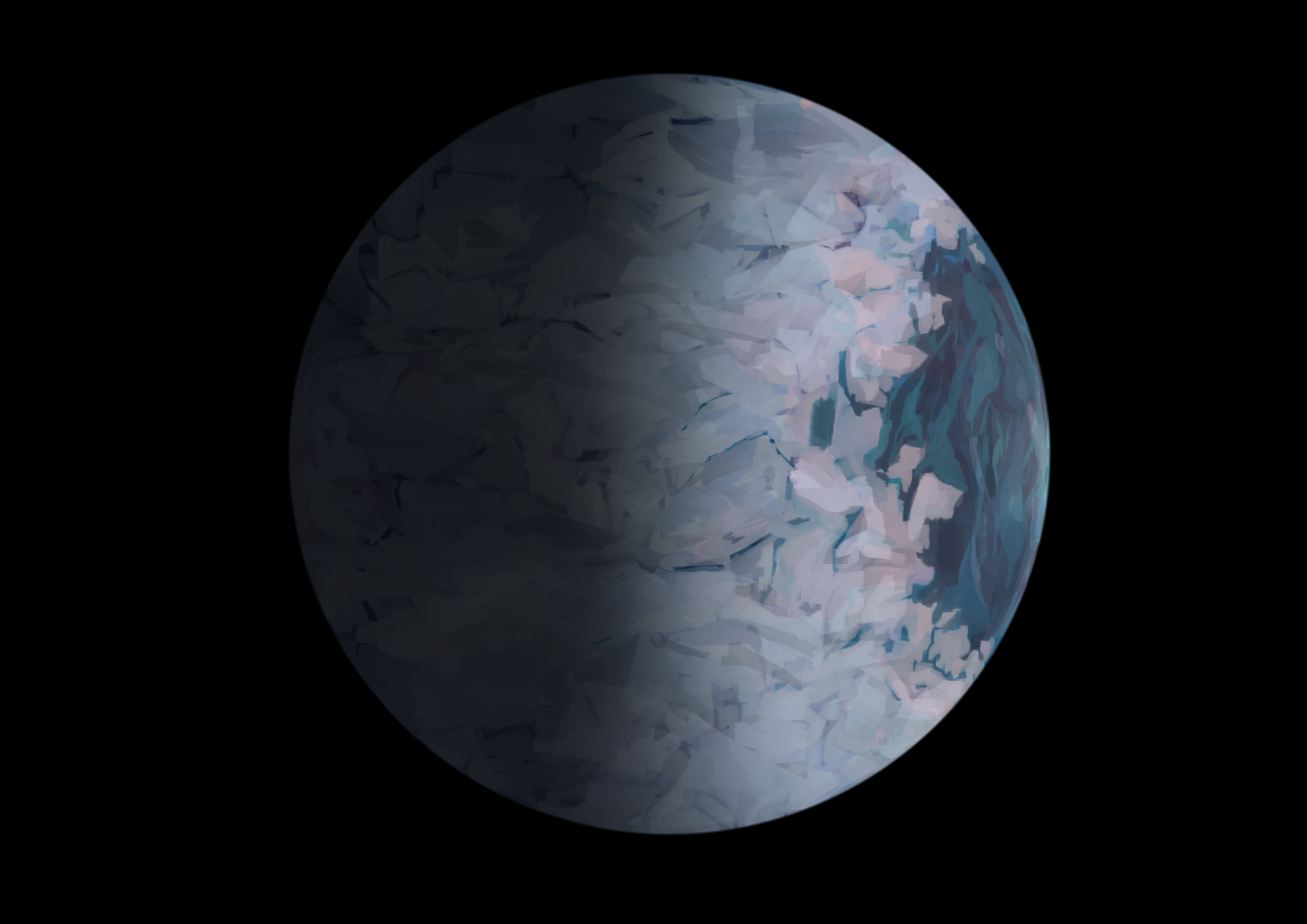
(潮汐ロックされたと仮定した場合のTRAPPIST-1 fの想像図 (アイボールアース), credit: Haruka Inagaki, Habitable Research Group, SGH Moriyama High School)
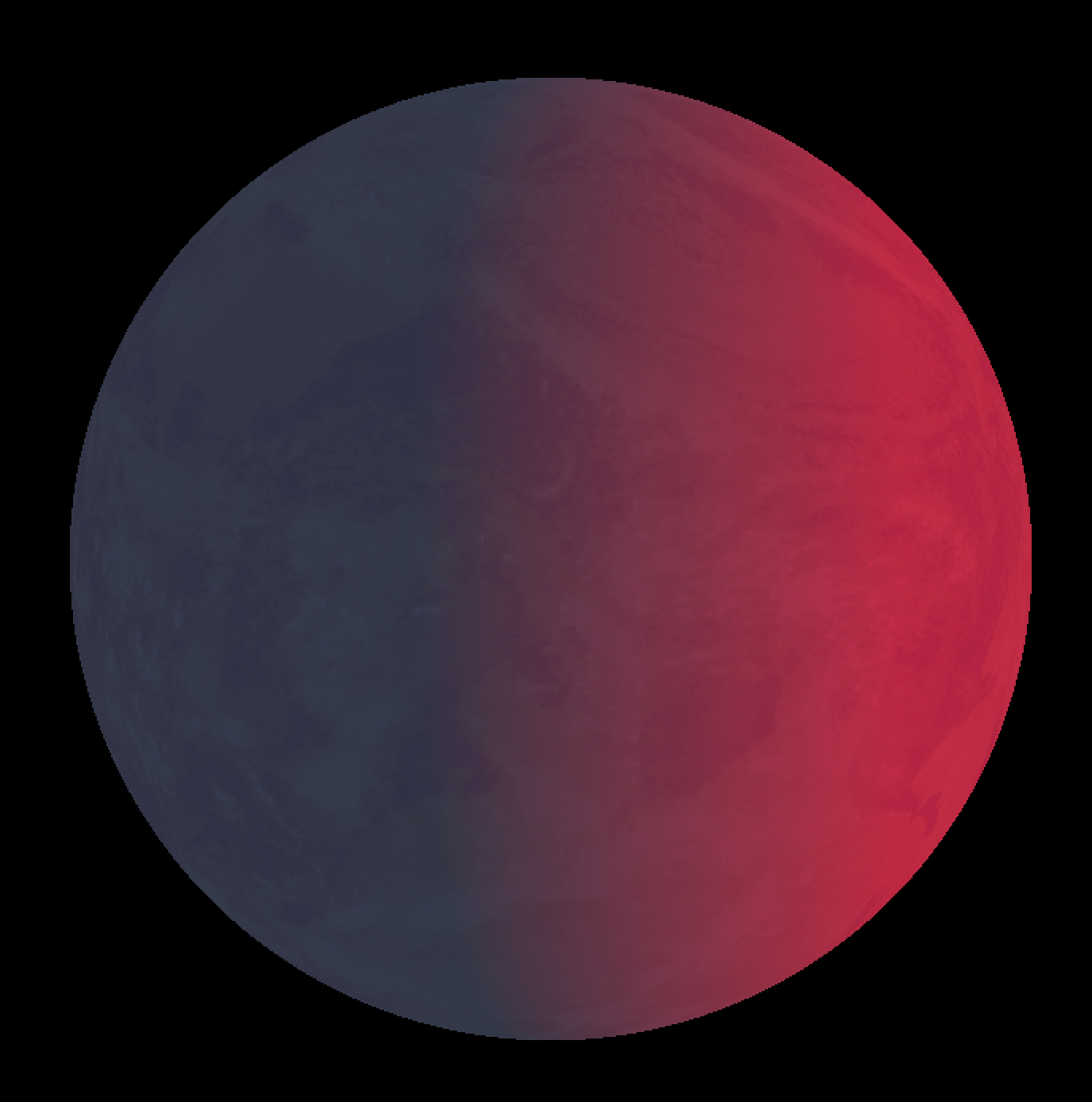 (Imaginary Picture of TRAPPIST-I h, covered with imaginary ice, credit, Yosuke Yamashiki, Ryusuke Kuroki & Natsuki Hosono)
(Imaginary Picture of TRAPPIST-I h, covered with imaginary ice, credit, Yosuke Yamashiki, Ryusuke Kuroki & Natsuki Hosono)
(TRAPPIST-1の7つの惑星群の公転の状況)
それぞれの公転軌道半径は(TRAPPIST-1 b, c, d, e, f, g, hの順で) 0.011, 0.015, 0.021, 0.028, 0.037, 0.045, 0.063 天文単位に存在し、半径はそれぞれ地球の1.08, 1.05, 0.77, 0.92, 1.04, 1.12, 0.76倍と、ほぼ地球の大きさに等しいと見積もられています。この星のハビタブル・ゾーンは太陽系相当天文単位(SEAU)によると、
金星相当軌道 0.016 天文単位
地球相当軌道 0.023天文単位
火星相当軌道0.035天文単位
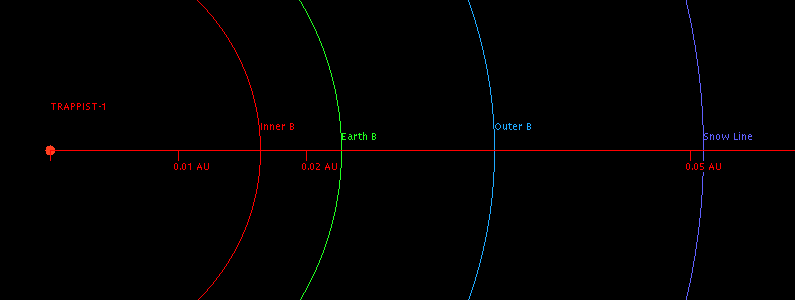
(SEAUによるハビタブルゾーンの位置)
Kopparapu et al.2013によると
内側境界Recent Venus 0.019天文単位
地球サイズ惑星の暴走温室限界 0.024天文単位
外側境界最大温室限界0.048天文単位
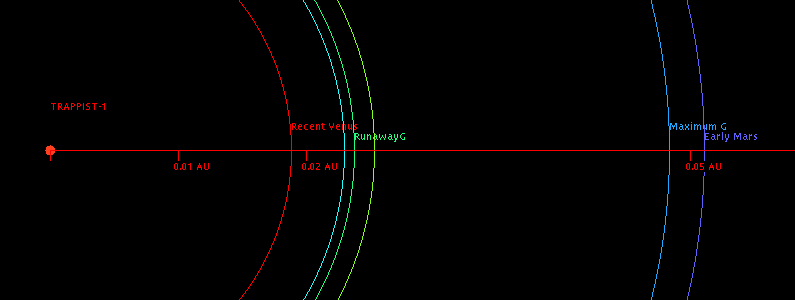
(Kopparapu et al. によるハビタブルゾーンの位置)
となっており、SEAUによると、bは内側境界の内側で温度は高く、c, d, eはハビタブル・ゾーンに存在すると考えられています。
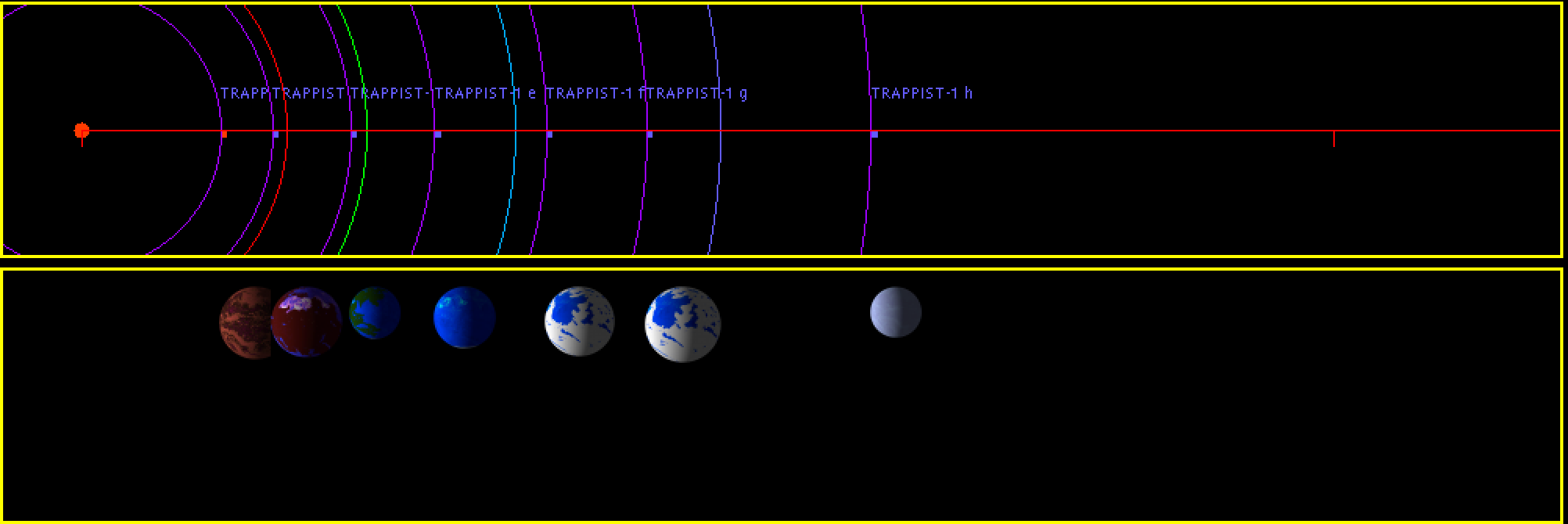
(SEAUによるハビタブルゾーンとTRAPPIST-1b,c,d,e,f,g,hの軌道位置,赤線が金星相当軌道,緑が地球相当軌道,水色が火星相当軌道,青がスノーライン)
ただし、TRAPPIST-1 bにおいても、潮汐ロックされているとすれば、惑星の昼半球と夜半球の境界領域にハビタブル・ゾーンが存在する可能性が指摘されており、また、他のf,gについてもスノーラインの内側にあり、潮汐力や内部の熱源などあれば、ハビタブルゾーンと考えられる可能性もあります。
また、Kopparapu et al.2013によると、ハビタブルゾーンにある惑星は、d, e, f ,g となり、先ほどのcは内側境界の中に位置してしまいます。TRAPPIST-I dはしかしながらRecent Venusの内側に位置はしますが、暴走温室限界線の内側にあるので、そのままでは海洋は存在できませんが、潮汐ロックされている場合境界領域(terminator)に狭い海が存在しうるとも考えられます。TRAPPIST-I gはしかしながら、外側境界最大温室限界付近のため、十分な温室効果ガスがある場合のみ居住可能だと考えられます。
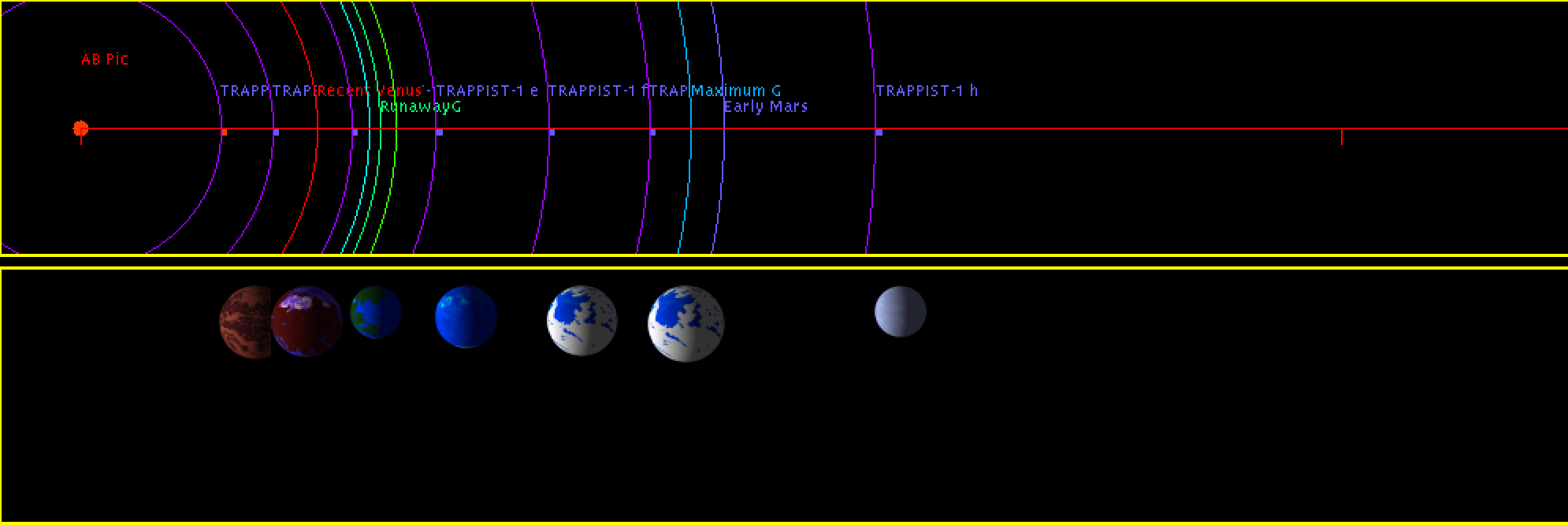
(Kopparapu et al. 2013 によるハビタブルゾーンとTRAPPIST-1b,c,d,e,f,g,hの軌道位置,赤線がRecent Venus境界線、緑色が薄い色からそれぞれ火星・地球・スーパーアースサイズの暴走温室限界線,その外側の薄青色が最大温室効果限界線(Maximum G), その外側の青が初期火星線(Early Mars)。この判定によるとTRAPPIST-1 e, f, gがハビタブルゾーンとなる)
NASAの公式ページには、カラフルなイメージ図やVR, 3Dイメージなども公開されています。
https://exoplanets.nasa.gov/trappist1/
カリフォルニア工科大学のジェット推進研究所(JPL)-Spitzer宇宙赤外望遠鏡のページによると、TRAPPIST-1の惑星のほとんどすべてが潮汐ロックされており(すなわち、常に中心星TRAPPIST-1に同じ面を向けており)、乾燥して暑い(熱い)昼半球と、寒くて氷に覆われているであろう夜半球にわかれているだろうとされています。ハビタブルゾーンに存在する惑星はTRAPPIST-1 e, f, gであるが(b-hの)いずれの惑星も液体の水が潜在的に存在する可能性があるとされている。また境界領域(terminator)に海が存在するのはTRAPPIST-1dで、海が広く存在する可能性のあるTRAPPIST-1e,fでも昼半球に集中しており、夜半球は氷で覆われているであろう、と解説がされています。このページではTRAPPIST-1 bは木星の衛星イオ(Io)のようであり、また最も寒いTRAPPIST-1 hはエウロパ(Europa)のように描かれています。
http://www.spitzer.caltech.edu/images/6266-ssc2017-01a-TRAPPIST-1-Planet-Lineup
2018年2月のより詳細な調査結果によって、いくつかの惑星は地球よりも水を大量に保有している可能性も示唆されています。より中心星に近いb,cでは水蒸気、d,e,fでは液体と氷、そしてgは大部分が氷としてでしょう。この詳細調査によって、それぞれの惑星の密度がより正確に求められました。現在ではTRAPPISTシステムは最もよく観測された惑星システムの一つといえます。
七つの地球サイズの惑星にそれぞれ液体の水が存在する可能性のある惑星系というのは、非常に興味深い惑星系です。また赤色矮星の寿命は太陽とくらべて桁違いに長いので、もしかすると非常に長い間進化した安定的な生命体が文明を築き、それぞれの惑星間で文明交流を繰り返しながら今後も長きにわたって存在してゆく、「理想郷」なのかもしれません*。
(文責:山敷庸亮)
TRAPPIST-1についての詳しいデータは以下のデータベースに
http://www.exoplanetkyoto.org/exohtml/TRAPPIST-1.html
* 実際に理想郷かどうかについて、以下のような懸念と論点もあります(野津翔太・山敷庸亮)
1) M型星は黒点活動・フレア等が太陽型星より活発であり、ハビタブルゾーンでの紫外線・X線強度などが強い。それらがハビタビリティにどう影響するかは不明。惑星大気が剥ぎ取られている可能性も否定できないが、逆に厚い大気に覆われていれば、これらが高エネルギー電磁波のシールドになる可能性もある。ただし、潮汐ロックされているとすれば、地磁気が存在しない可能性もあるため、その点では荷電粒子の直撃を受ける可能性も高い。
2) M型星の中でも低温側の星は全球対流状態にあると同時に、自転・活動性の振る舞いがM型の高温側の星に比べて良く分かっていない部分もあるため、実際どの程度このTRAPPIST-1が上記の活動があるのかはわからない。
なお、イラストにおいてexoplanetkyoto のページでは、潮汐ロックは起こりうるであろうが、それぞれ自転している惑星を想定しての想像図となっています
以下、Stellar Windowを利用して表示したTRAPPIST-1の星図上での位置。
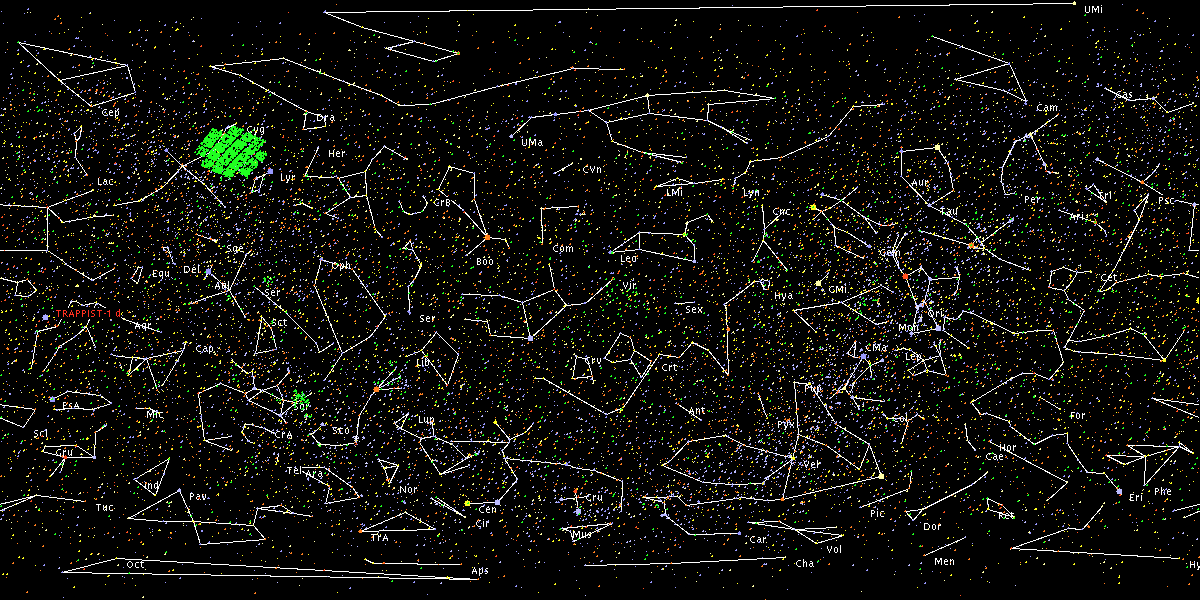
(Position in Stellar Map of star TRAPPIST-1 and its Exoplanet TRAPPIST-1 b,c,d,e,f,g,h)
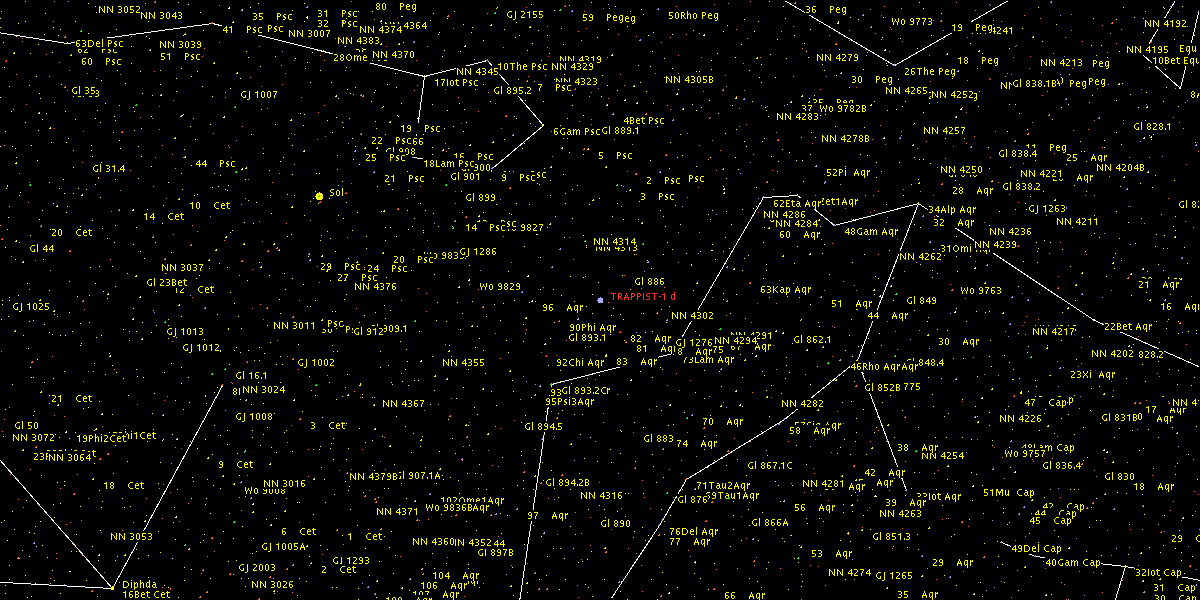
(Zoomed pos.in Stellar Map of star TRAPPIST-1 and its Exoplanet TRAPPIST-1 b,c,d,e,f,g,h)
1)Michaël Gillon, Emmanuël Jehin, Susan M. Lederer, Laetitia Delrez, Julien de Wit, Artem Burdanov, Valérie Van Grootel, Adam J. Burgasser, Amaury H. M. J. Triaud, Cyrielle Opitom, Brice-Olivier Demory, Devendra K. Sahu, Daniella Bardalez Gagliuffi, Pierre Magain & Didier Queloz. Temperate Earth-sized planets transiting a nearby ultracool dwarf star, Nature 533, 221–224 (12 May 2016) doi:10.1038/nature17448, Received 11 January 2016 Accepted 18 February 2016 Published online 02 May 2016
http://www.nature.com/nature/journal/v533/n7602/full/nature17448.html
2)Michaël Gillon, Amaury H. M. J. Triaud, brice-Olivier Demory, Emmanuël Jehin1, Eric Agol, Katherine M. Deck, Susan M. Lederer, Julien de Wit, Artem burdanov, James G. Ingalls, Emeline bolmont, Jeremy Leconte, Sean N. Raymond, franck Selsis, Martin Turbet, Khalid barkaoui, Adam burgasser, Matthew R. burleigh, Sean J. Carey, Aleksander Chaushev, Chris M. Copperwheat, Laetitia Delrez, Catarina S. fernandes, Daniel L. Holdsworth, Enrico J. Kotze, Valérie Van Grootel, yaseen Almleaky, Zouhair benkhaldoun, Pierre Magain & Didier Queloz. Seven temperate terrestrial planets around the nearby ultracool dwarf star TRAPPIST-1. Nature 542, 456–460 (23 February 2017) doi:10.1038/nature21360.
Received Accepted Published online
http://www.nature.com/nature/journal/v542/n7642/full/nature21360.html

